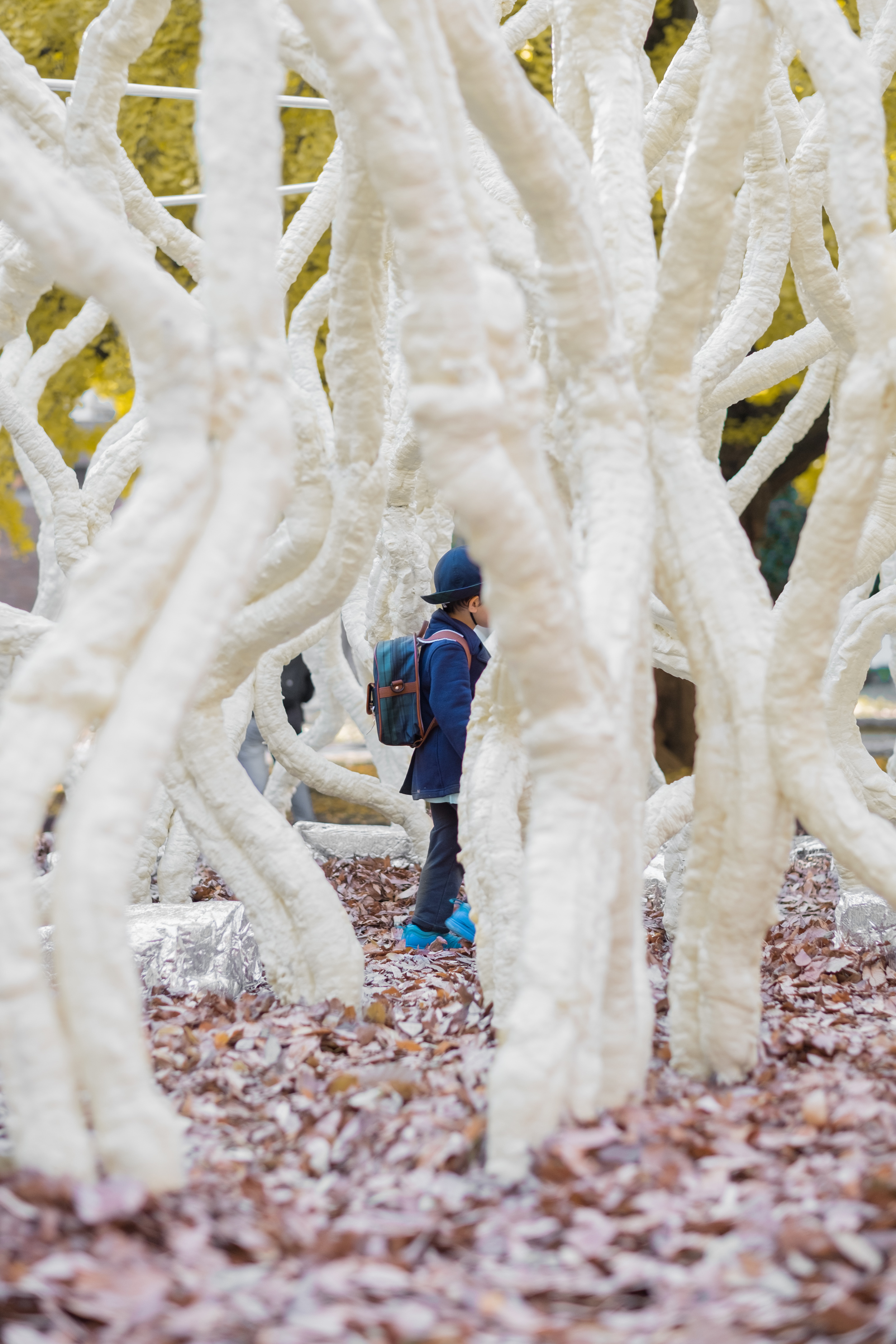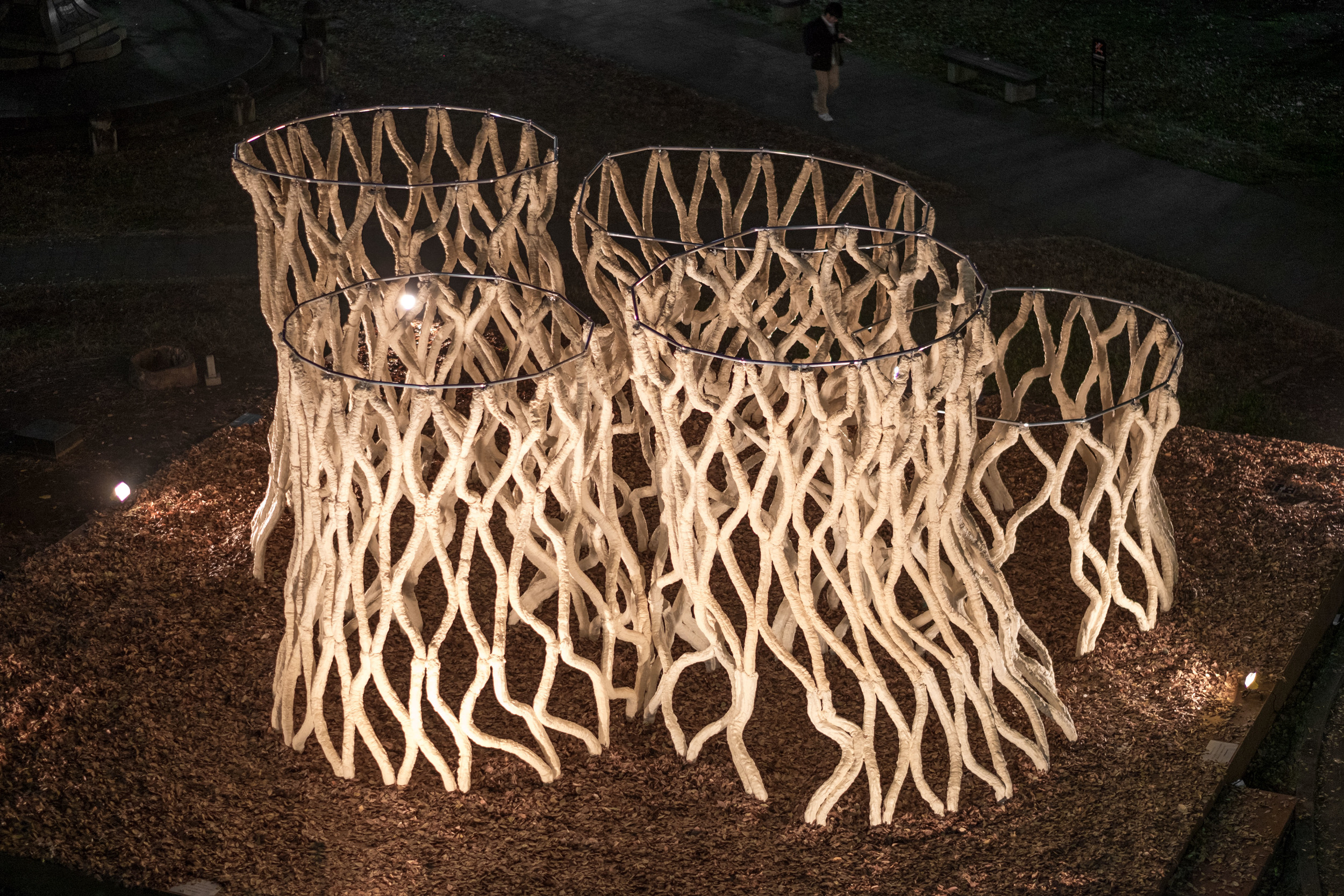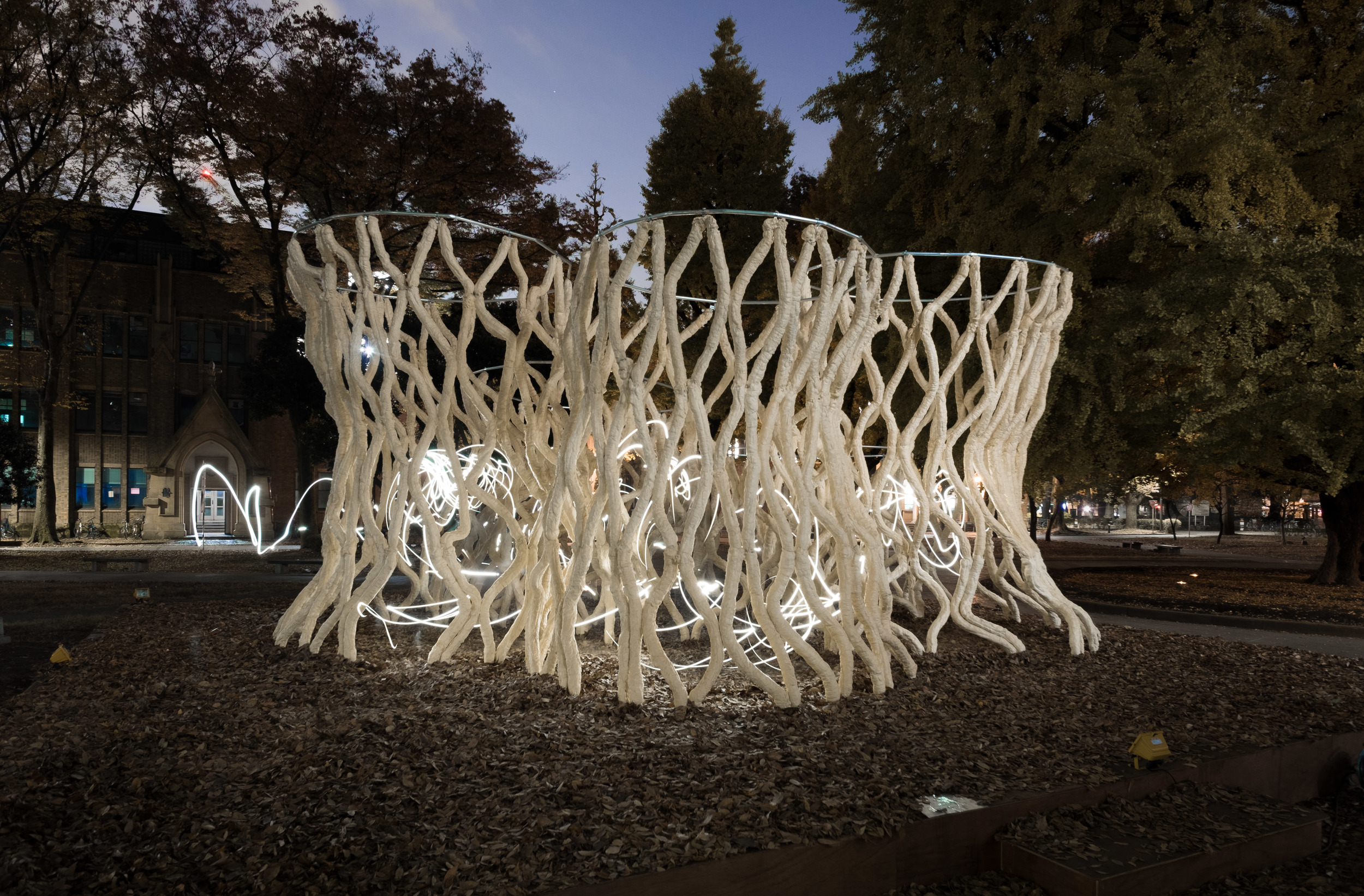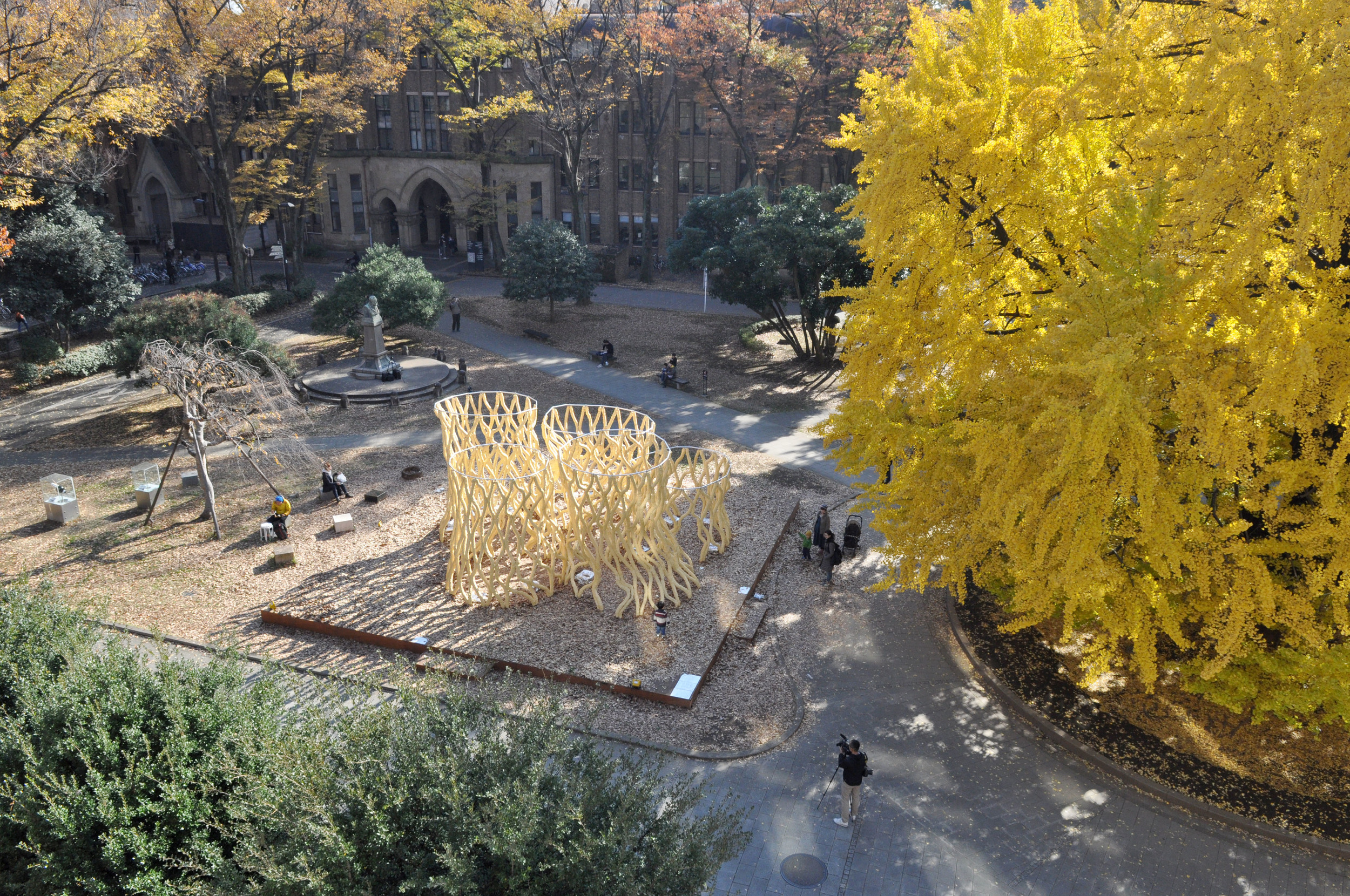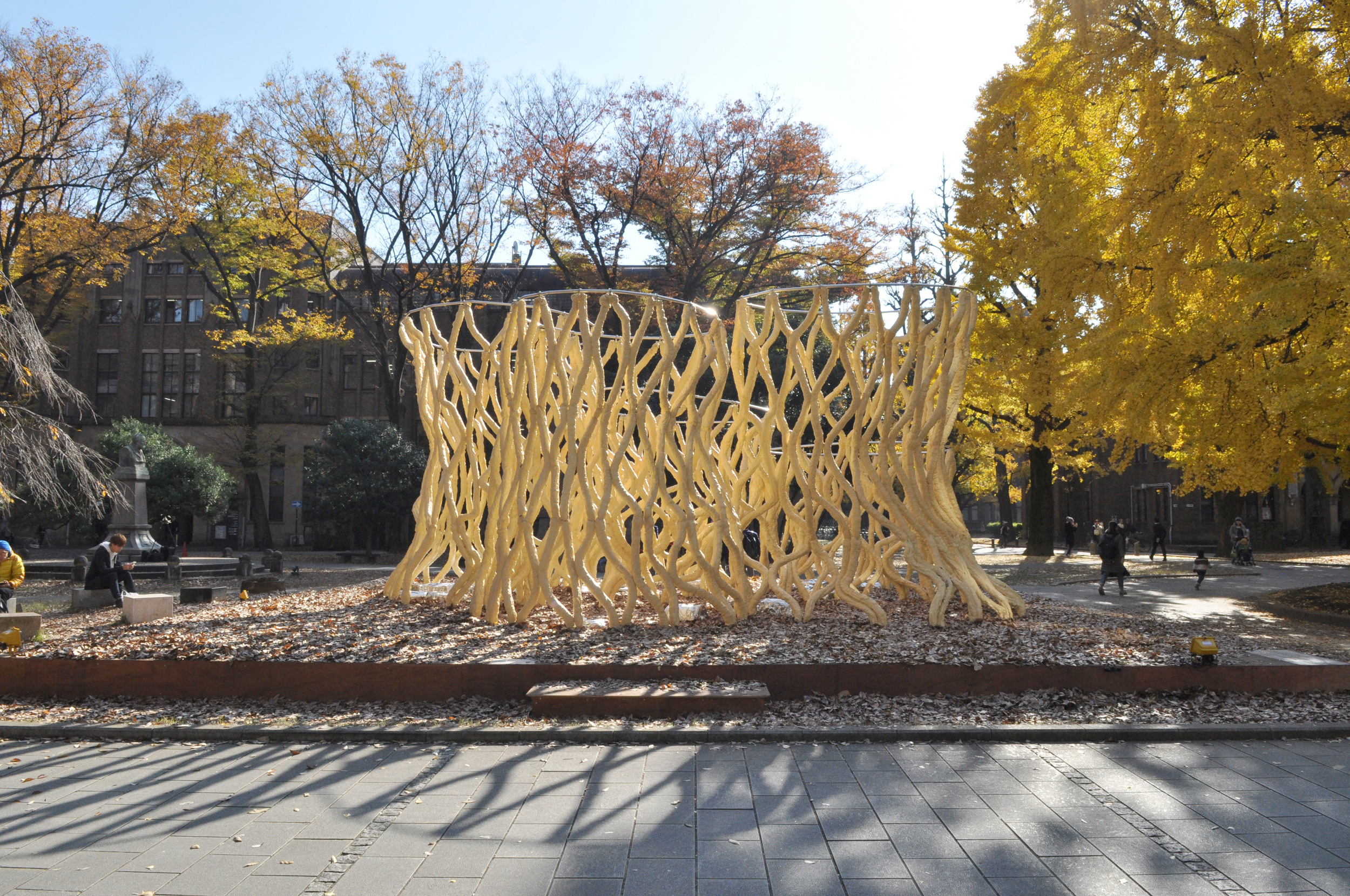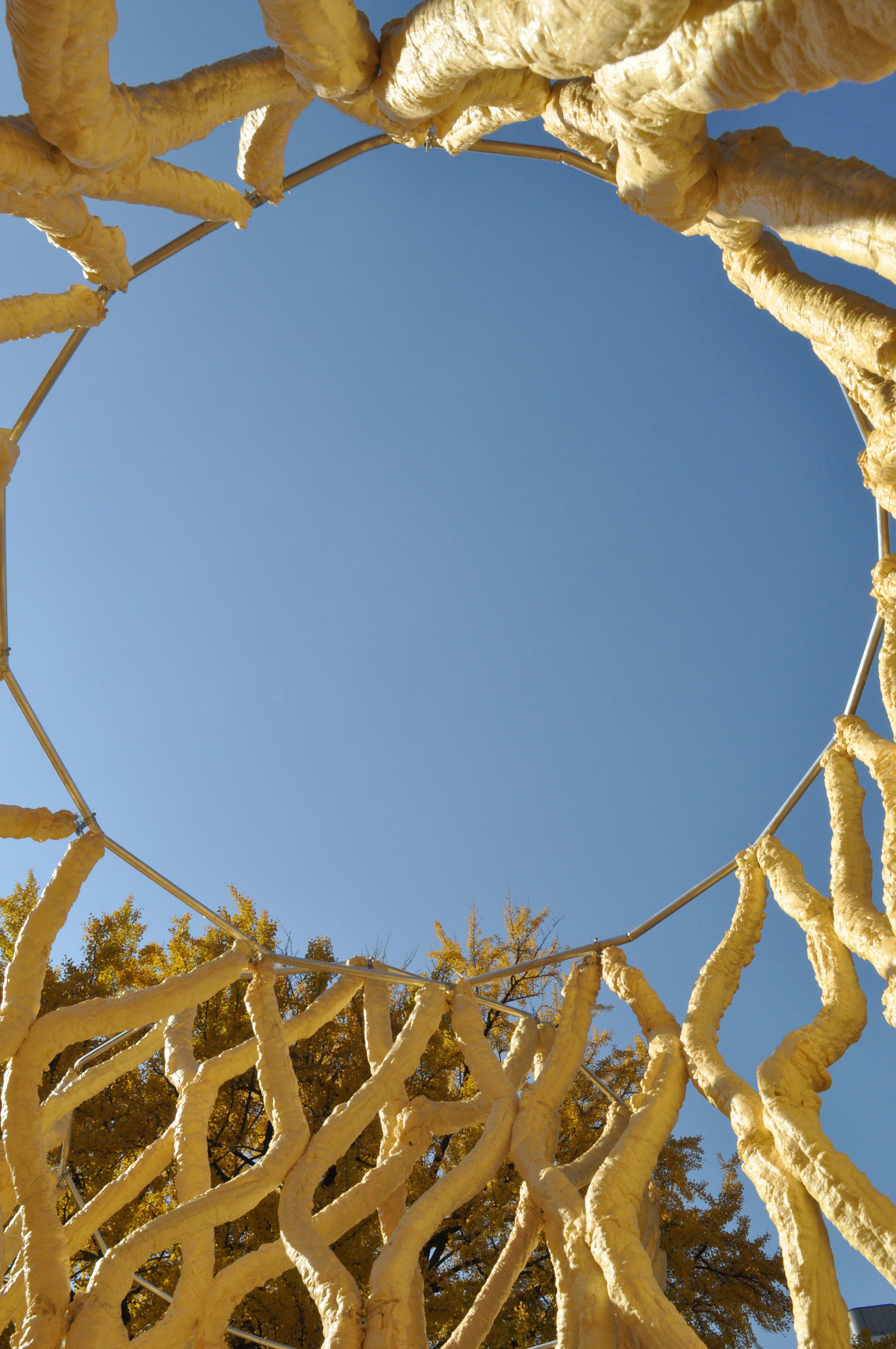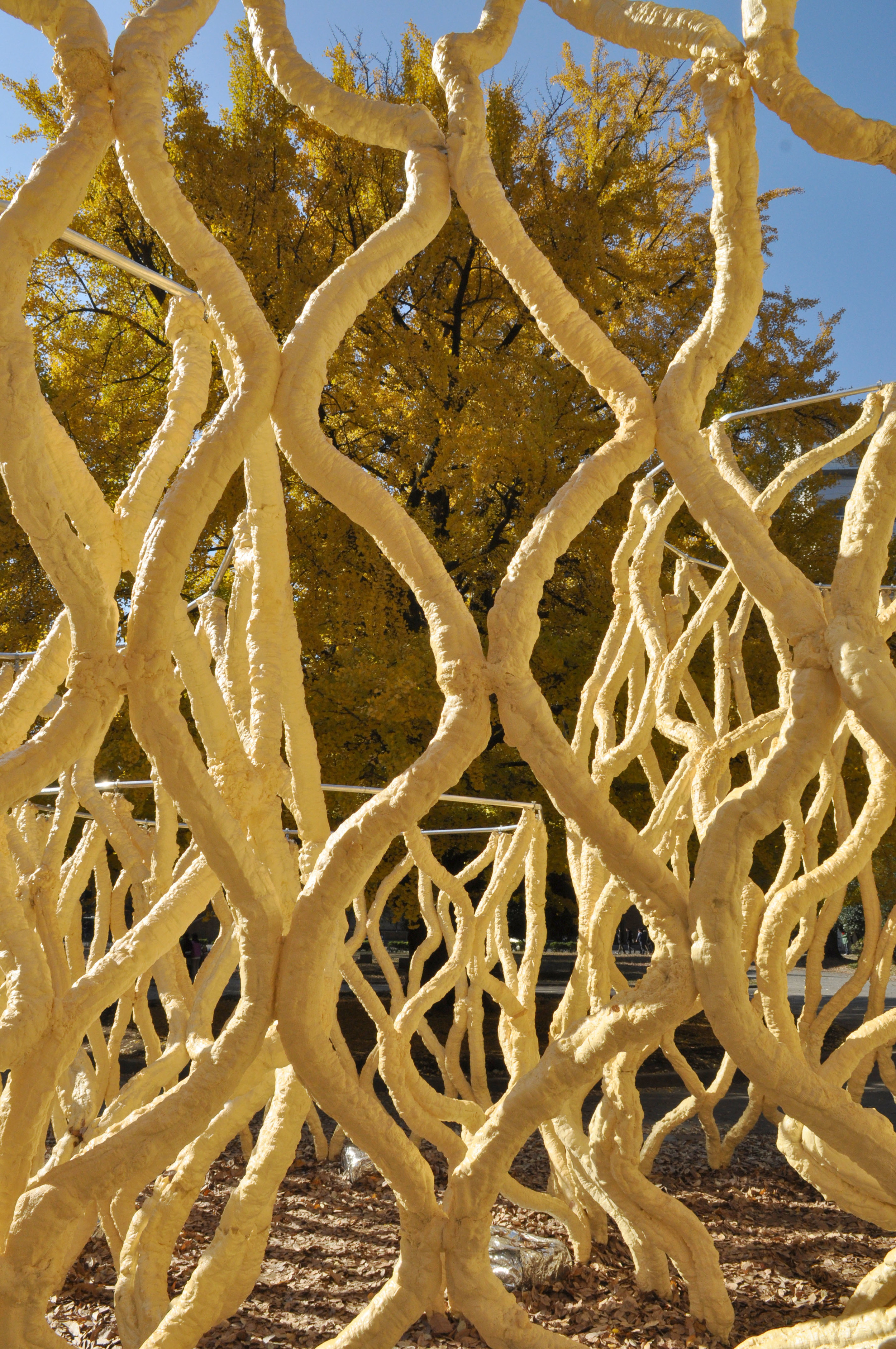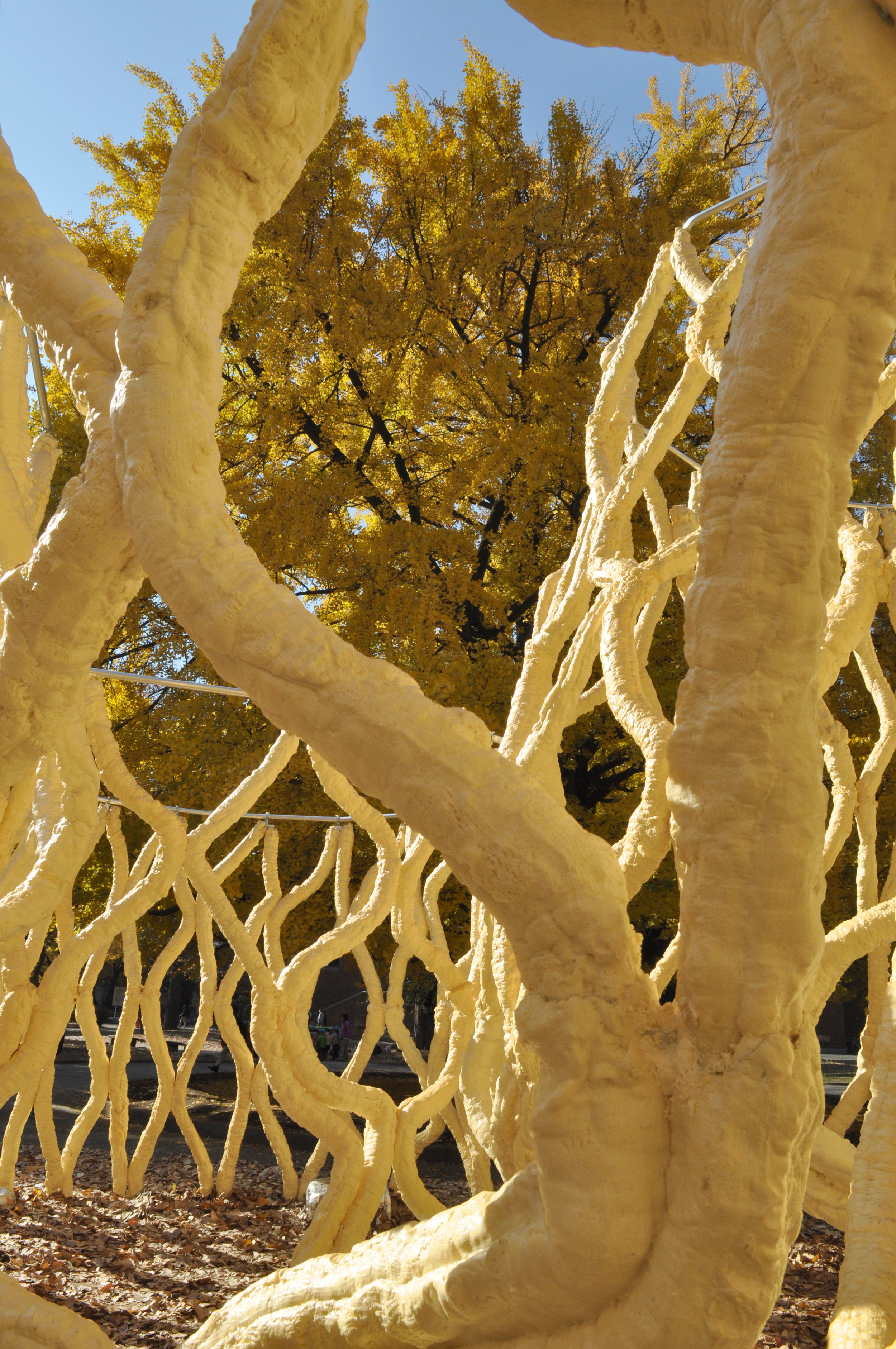東大実験パビリオン "Toca"
Tool Operated
Choreographic Architecture
2014-15
The University of Tokyo
Graduate Program, 1st Year
Students (order of last name):
Gilang Arenza, Hadin Charbel, Ann-Kristin Crusius, Akane Imai, Jiang Lai, Samuel Aaron Eugene Lalo, Alric Lee, Xu Li, Ittidej Lirapirom, Kenneth Lønning, Deborah Lopez, Luca Marulli, Moritz Münzenmaier, Alexandra Karlsson Napp, Masatoshi Nishizato, Kalin Pan, Ratnar Sam, Pitchawut Virutamawongse, Jan Vranovsky, Victor Hugo Wido, Christopher Wilkens, Ying Xu, Isaac Yoo, Lu Yuanfang, Yihan Zhang
Fellow Teaching Associates:
Ken Hotta, Toshikatsu Kiuchi, Kosuke Nagata
趣旨
このパヴィリオンは、東京大学が主体となって活動している修士1年生向けに組み立てられた研究の最終アウトプットです。研究の主な目的は、構造体を意匠的観点でデザインし、実物大で構築するに当たって必要な構造解析、構法、材料、部材生産、などを統合するシステムの開発です。
3Dプリンタやレーザーカッターなどのデジタル・ファブリケーション機器は、建築の生産と私たちの生活をどう変えるのか?というテーマに毎年、建設会社と共同で、デジタル・ファブリケーションを応用した実験的パビリオンの建設を行っています。2015年、竹中工務店と共同で行ったTocaプロジェクトは、「人と機械の恊働」をテーマとし、「人が地面から建築を描き上げる3Dペン」による建築に挑みました。より大きいスケールで展開できる3Dペンの素材として、断熱材として普段使われ建築の表にあまり出ませんが、純瞬時に硬化するという特質を持つ発泡ウレタンと強度出すために金属メッシュで補強した新しい組み合わせを考案しました。
2015年のTOCAプロジェクトでは、目標形状を作業者に伝えることに加えて、人の作業による誤差をデジタル化して構造最適化をくり返すことで、目標形状自体を徐々に変化させることを試みました。これは、人と機械が恊働することにより、あらかじめ形状がデザインされていながら、人間的なゆらぎを柔軟に取り込み、実際の施工によってはじめてユニークに形状が確定する建設システムです。
Abstract
This project proposes a new strategy for a smart construction method for architecture. A new material combination of urethane foam and metal mesh was also researched in early phases. Through streamlined information flow in each construction steps, recent developments in BIM enables shortened design-construction period, and higher precision of building construction. Yet, the flow of three-dimensional information faces challenge when passed on to the execution phase by craftsmen. Toca demonstrates a potential technology that can extend the BIM process directly onto the construction site by enhancing human construction ability with AR guidance system. This is a different approach from full automation. However, as long as human hands are involved, the discrepancy between an ideal shape and the actual outcome cannot be avoided. This system maximizes human cadences, not inherent errors, without compromising the structural integrity by the use of a process called stepped optimization. This is a process defined by continuous correction of the virtual model (target geometry) in discrete steps. What resulted was both emergent and optimized, unpredictable and yet constrained; a hybrid condition of restrained organicity.
Sponsor: Takenaka Corporation
Professors:
Kuma Kengo with Yusuke Obuchi
Collaborators:
Computer Science: Prof. Igarashi, Yosuke Takami
Structural Engineering: Prof. Sato, Mika Araki

